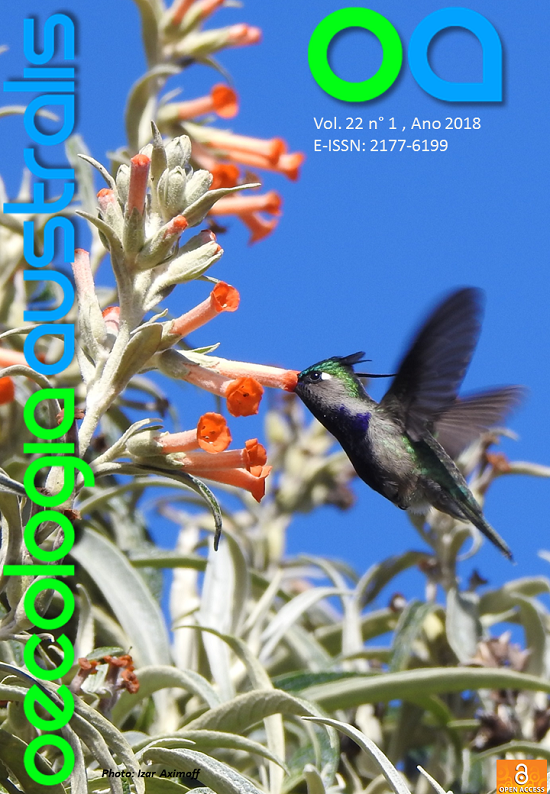HABITAT CHOICE BEHAVIOR IN Macrobrachium brasiliense (HELLER, 1862) (DECAPODA, PALAEMONIDAE) UNDER LABORATORY CONDITIONS
DOI:
https://doi.org/10.4257/oeco.2018.2201.05Keywords:
fine sediment, microhabitat, prawn behaviorAbstract
The main objective of this study was to analyze the choice behavior of adult individuals of Macrobrachium brasiliense (Decapoda, Palaemonidae) with regard to different substrates and microhabitats in two distinct experiments. The first experiment offered the prawns three samples of substrates with different granulometries: fine sand, coarse sand, and gravel. The second experiment offered three types of microhabitats: aquatic macrophytes, wood fragments, and rocks. In general, the prawns chose the fine substrate, to a significant extent (ANOVA, p < 0.01). In the microhabitat experiment, the prawns selected the wood fragments (ANOVA, p < 0.01). In general, these results show that substrates with fine sand and microhabitats composed of fragments of wood might provide direct benefits for M. brasiliense, such as protection against predators and food availability through biofilm formation.


